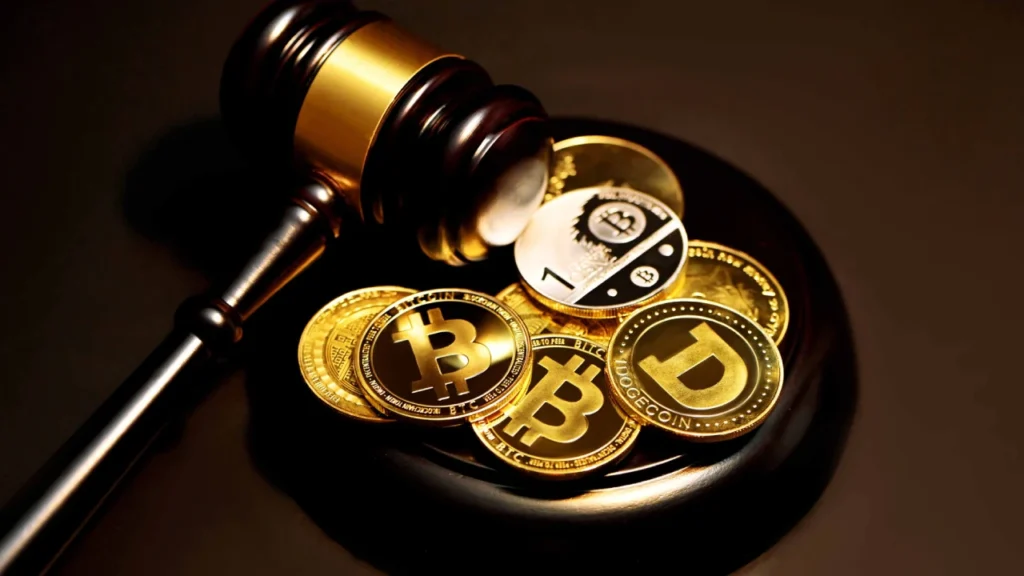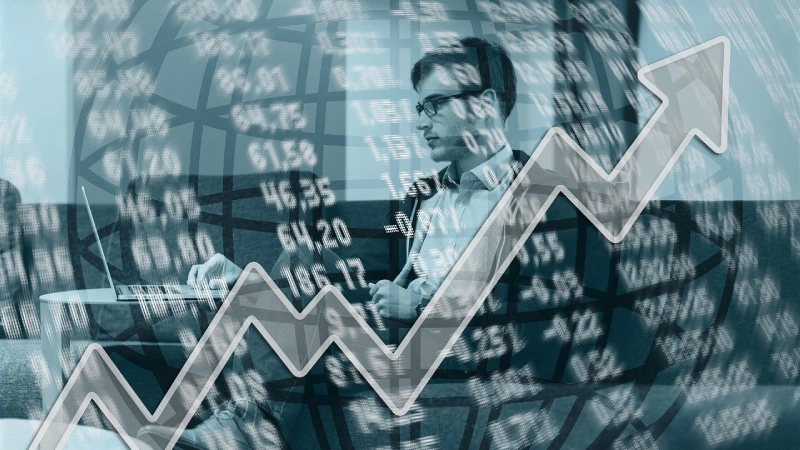Table of Contents
Highlights
- Real-world Asset tokenization has grown over 260% in 2025, surpassing $25 billion in value.
- Private credit leads the sector, followed by tokenized Treasuries, real estate, and gold.
- Institutional players, such as BlackRock and J.P. Morgan, are driving large-scale adoption.
- Analysts predict the market could reach up to $30 trillion by 2030 if regulatory and technological hurdles are overcome.
By 2025, real-world asset (RWA) tokenisation will have progressed from a specialised experiment to a significant area of interest for international finance. The technique of representing physical assets on a blockchain as digital tokens, such as bonds, commodities, real estate, or private credit, is known as asset tokenization. While maintaining a connection to the underlying financial or physical item, these tokens can be exchanged, fractionally held, and included in decentralized finance (DeFi) systems.
Some of the most prominent financial institutions in the world are now adopting RWA tokenization, which was previously mainly the purview of blockchain startups and tech enthusiasts. This change promises previously unheard-of liquidity, accessibility, and transparency while revolutionising the way assets are issued, exchanged, and managed.\

Market Expansion: From Billions to Tens of Billions
The RWA market has shown remarkable growth in 2025. The market was valued at approximately $8.6 billion at the beginning of the year. It increased by more than 260% in a few months, reaching nearly $23 billion by mid-year. Depending on how it is measured, the market has nearly quadrupled in size over the past three years, reaching between $24 billion and $25 billion.
Additionally, the makeup of tokenised assets has changed dramatically. With over half of the total tokenised value (more than $14 billion) coming from private credit, the market is currently dominated. Tokenized U.S. Treasuries come in second, with approximately $7.5 billion, followed by real estate with around $3.8 billion, and commodities, such as gold, with about $1.4 billion. Growing institutional interest in tokenising higher-yield, income-producing assets is reflected in the dominance of private lending.
Major institutions are driving a large portion of this expansion. Along with J.P. Morgan’s tokenized payment and settlement initiatives and Franklin Templeton’s on-chain funds, BlackRock’s tokenized Treasury fund (BUIDL) has emerged as one of the more well-known examples. In addition to bringing billions of dollars into the market, their participation has given the industry legitimacy, which motivates banks, hedge funds, and other asset managers to explore similar products.

Cross-Chain Competition: Solana vs. Ethereum
Due to its well-established developer base, vast DeFi ecosystem, and sophisticated infrastructure, Ethereum remains the dominant player in the RWA ecosystem. Currently, Ethereum controls over 80% of the market for tokenized assets. However, as other blockchains begin to capture market share, competition is intensifying.
Known for its quick transactions and cheap fees, Solana has grown by more than 200% in 2025 alone, and the total value of tokenised assets on its network has surpassed $550 million. This rapid ascent suggests that, although Ethereum’s network effects remain powerful, RWAs may have a multi-chain future, with multiple platforms serving diverse asset classes, transaction volumes, and investor requirements.
Real-World Asset Use Cases Accelerating Adoption
The rise of RWAs is not confined to institutional balance sheets—it is producing tangible, real-world results in diverse sectors.
For instance, a blockchain-based real estate firm in Dubai tokenized and sold an investor a luxury villa worth approximately $475,000 in under five minutes. This event demonstrated how fractional ownership can be made possible by tokenisation, providing smaller investors with access to high-value real estate markets that have hitherto been exclusive to the wealthy.

Custodians and investment banks are collaborating on tokenized money-market products on Wall Street. While maintaining complete compliance with financial regulations, these products aim to expedite settlement times, reduce operating costs, and facilitate instantaneous transfers between counterparties.
Outside traditional finance, tokenized stocks are also emerging, particularly in markets with less stringent regulatory frameworks. These allow investors to gain fractional exposure to publicly traded companies via blockchain tokens, expanding access for individuals who may face geographic or economic barriers in conventional equity markets.
Enabling Trends: Regulation, Technology, and Institutional Embrace
Several trends have converged to make 2025 a breakthrough year for RWA tokenization.
The first is the increase in institutional participation. Asset managers, insurance providers, and pension funds are increasingly interested in the yield potential of tokenized Treasuries and private credit. Many of these assets are incorporated into DeFi protocols, which increase liquidity and return potential by allowing them to be borrowed against or pledged as collateral.

Second, the clarity of regulations is gradually getting better. Although international frameworks remain disjointed, several nations have established more precise rules for compliance, investor protection, and token issuance. A desire to integrate blockchain technology into the regulated financial system in the US has been indicated by legislative developments surrounding stablecoins and tokenized funds.
Third, the underlying technology of tokenization has advanced. The issuance and administration of RWAs are now less complicated thanks to developments in institutional-grade custody systems, blockchain-based compliance tools, and multi-chain interoperability. Trusted oracles now provide more reliable connections between off-chain asset data and on-chain tokens, and smart contract auditing procedures have improved.
Risks and Regulatory Challenges
Despite the optimism, RWA tokenization faces substantial challenges.
The most pressing issue remains regulatory ambiguity. Tokenised assets are frequently classified in grey areas of securities law, and cross-border transactions are made more difficult by disparate foreign standards. Tokenised markets run the risk of circumventing investor safeguards in the absence of explicit regulations, which could result in abuses akin to those that occurred in financial markets before regulation.
Another obstacle is security worries. Trust in tokenized products can be weakened by smart contract flaws, imprecise or hacked oracles, and inadequately secure custody arrangements. The possibility of a well-publicized failure, such as the demise of a significant tokenized fund, could impede institutional progress.

There is also the element of public scepticism. Retail participation is still low, even if institutional players are investing billions in RWAs. It will need both education and platforms that are safe and transparent to gain the trust of consumers.
A Multi-Trillion-Dollar Opportunity
Future projections for RWA tokenisation are ambitious. A conservative estimate suggests that by 2030, the industry will reach a value of $2 trillion. The most ambitious estimates, backed by certain major institutions, indicate that up to $30 trillion worth of assets may be tokenized within the next ten years, while more optimistic scenarios envision $4 trillion.
Overcoming technological and regulatory obstacles will be necessary to reach these numbers. Additionally, it will rely on tokenisation platforms’ capacity to offer definite advantages over conventional systems while integrating easily with the current financial infrastructure. Tokenisation has the potential to drastically alter global capital markets if these obstacles are overcome, enabling real-time settlement, round-the-clock trading, and worldwide access to previously illiquid assets.

Conclusion
By 2025, real-world asset tokenisation will have grown rapidly, signalling the start of a major financial revolution. Through tokenisation, physical assets are being added to the blockchain, opening up new avenues for accessibility, liquidity, and investment diversification. The participation of major financial institutions, combined with improved regulatory frameworks and technological advancements, is enabling RWAs to transition from pilot programs to mainstream market elements.
The road ahead is not risk-free, though. The need for increased public trust, addressing technology vulnerabilities, and rectifying regulatory deficiencies remains an urgent problem. Tokenisation, however, has the potential to bridge the gap between traditional and digital banking if handled appropriately, setting the stage for a more effective, equitable, and internationally integrated financial system.